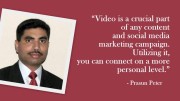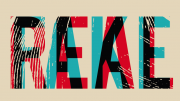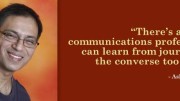Being a fulltime journalist, for almost a decade, with some distinguished mainstream media houses, I can personally vouch for the fact that the shift to the other side of communications is not as easy as it may sound. How difficult? Well, that depends on your appetite and the distance you are willing to travel to satiate it. Here are a few lessons that I’ve drawn from my experience.
My first shift happened in 2009. Blame it on recession or my “just married” status, I finally realised the need to move out of a five-year-old job with a leading media house. Looking forward to growth and new challenges, I sailed to corporate communications. My first stint at being a communications strategist for another prominent media house did make my transition easy, but my job way tougher. The nuances of that transition and the finer lessons learnt have largely drawn my career graph as a communications professional.
- The ultimate challenge – Pitching
The most difficult but quintessential part of PR – client servicing or execution – is the biggest challenge for an ex-journalist. It’s a complete role reversal! A journalist who was ‘almost forever’ inundated and often ‘miffed’ with the umpteen press releases, communications, calls, invitations and reminders from PR executives until now, was suddenly doing the same thing. Standing on the other side, he soon begins to get a taste of what he and his editorial peers do to his ‘new peers’.
The only silver lining here is that many journalists being your ex-colleagues and friends wouldn’t ignore your messages outrightly. This does get you some initial relief, and hopefully – a positive conversion later.
- The easy part – Strategising
Having spent a considerable time on the other side of the table, an ex-journalist knows and understands what’s news and newsworthy. That is what makes his PR stint relatively easy. Finding out opportunities, understanding the thought process of media, and building long-lasting relationships are some of the things that come naturally.
- Things to Change
This shift calls for several lifestyle and attitude changes as well to sustain in the new profession. Some of them are:
Language: May sound untrue but it’s a bare professional fact. A journalist moves around with a very different mindset. You are always on the lookout for news, finding the truth, investigating, dissecting and trying to gauge the motive behind every message. However, a PR professional has a line of thought to defend before both – the client you work for and the media you pitch to. It’s more like a sales job trying to convince, please and sell. He minds his tone and tenor, and maintains his poise all the time.
Diplomacy: Like it or not, public relations is a diplomatic job. You can’t afford to express yourself as honestly as you would want to, more often than not. You will have to keep your feelings and opinions to yourself, and be restrained from being too upfront for that amounts to ‘being unprofessional and rude’.
Work Within Timeframes: While a journalist’s deadlines are actually ‘dead’ lines, the shift to PR further breaks down deadlines into several fragments of mini-deadlines. This means, you deal with deadlines every minute and hour of the day – at the clients’ end and other times at media’s. And meeting any one of them brings no relief. All deadlines here work in sync, with one quite as swiftly leading to the other. The cycle, that way, is endless.
I can write volumes on the contrasting differences in the work culture and style of a journalist and a PR professional. The bottom line remains – this transition is a tough terrain to follow. A narrow escape may be a switch to corporate communications instead of getting straight into a consultancy, which is no less than a war zone – with several clients, targets and deadlines. So, if you can shun the “attitude” of a reporter but not his journalistic “aptitude”, you could well lead your way into successful corporate communications with smart strategising, campaign planning, and content and relationship management.











Be the first to comment on "Transition from Journalism to PR: A Tough Terrain"